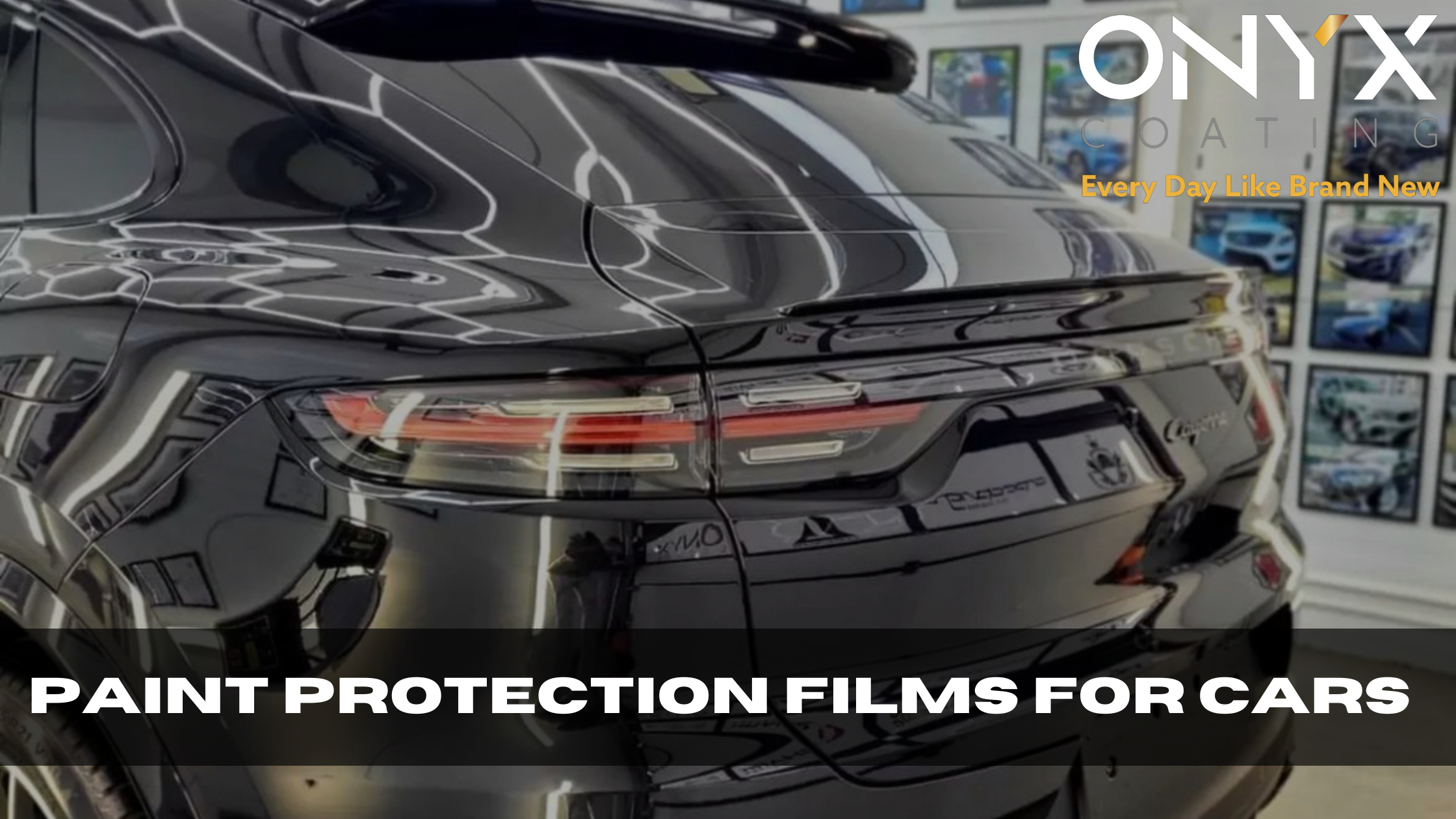
Paint protection films for cars provide a level of protection that every vehicle requires. As a car detailer, you understand the importance of keeping any vehicle looking its best by applying and using high-quality protects that protect it. However, no matter how carefully you drive, any car’s paintwork is vulnerable to scratches, chips, and other forms of damage from the road, the elements, and even bird droppings. That’s where paint protection films come in. These clear films are applied to every car’s exterior to protect the paint from damage, keeping it looking pristine for longer. In this blog, we’ll look at what paint protection films are, and how to apply them.
Paint protection film, also known as clear film, are transparent, thermoplastic urethane material that is applied to the exterior of a car. These films are designed to protect the car’s paint from scratches, chips, and other forms of damage. They are particularly effective at guarding against damage caused by rocks, road debris, and other harsh conditions.
There are two main types of paint protection films: pre-cut and custom-cut. Pre-cut films are designed to fit specific make and model vehicles, while custom-cut films are tailored to fit the individual contours of a specific car. Pre-cut films are more widely available and less expensive, while custom-cut films offer a more precise fit and greater protection.
The benefits of paint protection films for cars are numerous. Firstly, they provide an additional layer of protection for the car’s paint, reducing the likelihood of scratches, chips, and other forms of damage. Secondly, they can help maintain the value of the car, as they keep the paint looking new for longer. Finally, they can be a cost-effective alternative to repainting cars, as they are significantly less expensive than a full respray.
Proper installation of paint protection films is critical to ensure their effectiveness. As car care experts we can’t stress enough how important it is to have an expert install such products. By having them installed by a professional, vehicle owners can ensure a seamless fit. Professional installers have the experience and tools necessary to ensure that the film is applied correctly, without any bubbles, creases, or other imperfections.
Longevity-wise, there’s no doubt that the PPF provides a level of protection, but how long it lasts depends on how it is maintained. Maintaining paint protection films is essential to ensure their longevity and effectiveness. One way of maintaining it is to add a PPF Nano Coat to ensure it also performs well.
This advanced product is specifically designed to improve the protection of films, elevating their performance and maintaining their pristine appearance over time. Check out the full product information here. And check out our next blog on all of our expert tips on the dos and don’ts to remind your clients after the PPF is installed.
Paint protection films are an excellent investment for any car owner looking to protect their vehicle’s paint from scratches, chips, and other forms of damage. By following the tips and recommendations outlined in this blog, you can ensure that paint protection film stays in excellent condition and continues to provide effective protection for years to come. Remember to wash the car regularly, avoid harsh chemicals and high-pressure washers, and use recommended products for maintaining film. With proper care and maintenance, paint protection film can help keep cars looking new for years to come.
Stay tuned for our next blog article that will cover everything under the sun for the ways to maintain a PFF-coated vehicle!

Watch as water beads off the deck with our super hydrophobic coatings.

Protect the paintwork from UV damage and keep its vibrant colour despite the conditions.

Let the fear of a rough docking be a thing of the past with a 10H coating.

With minimal maintenance, our products are guaranteed to provide protection for years to come.

With our chemical and contaminant resistant coating, the surface is kept clean. Needing only minor occasional maintenance.

Trusted in 70+ countries, Onyx Coating is the top choice for professionals and car owners seeking premium protection.

Our ceramic coatings adhere to the surface making it resistant to corrosion and oxidation and contamination-free.

Bonds tight with the surtace to maintain a uniform cover and protect the surface evenly.
If you are interested in our products or keen to work with us, send us a message and we will get in contact with you to schedule a quick call or contact us via our email [email protected]
Once this information has been received our team will review the accounts and get into contact with you.
With the world’s first N1 nano coating product under our name, we are one of the most advanced automotive protection providers in the market.
Sign up for the latest offers & promotions




© ONYX COATING 2025. All Rights Reserved.